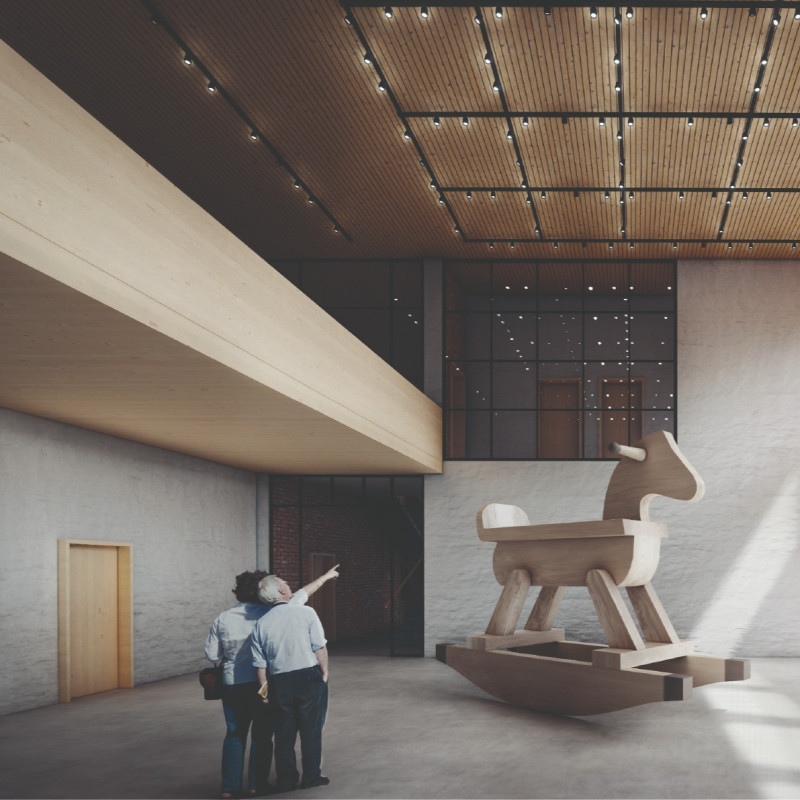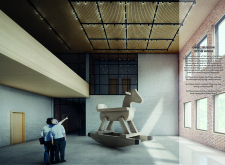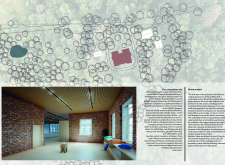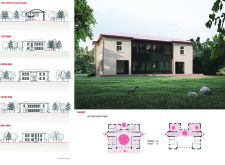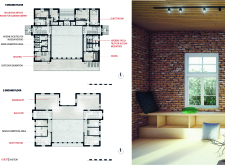5 key facts about this project
The Omuli Museum of the Horse in North Latvia reuses a school building that was built in 1936. Located within the North Latvia Biosphere Reserve, which is recognized by UNESCO, the museum serves two main purposes. It aims to educate visitors about local horse breeds and their significance while also acting as a guest house and a workspace for artists. The design focuses on preserving the building’s historical character while adapting it for new uses.
Functionality and Phases
The project is organized into several phases to create a well-rounded experience. The first phase includes summer workshops led by artists, allowing visitors to engage in day-long activities. The next phase introduces a longer-term residency for artists, enabling them to stay and work at the site. Finally, the museum and guest house will operate year-round, providing continuous access for both local and visiting crowds.
Material Considerations
Preserving the existing structure is essential to the design approach. The team intends to keep and clean the original load-bearing masonry inside while updating the exterior with new insulation. This approach honors the building’s past and emphasizes sustainability. Including solar panels highlights a commitment to environmental efficiency, blending modern energy solutions with historical architecture.
Spatial Organization
The layout of the museum is designed to effectively separate the needs of visitors from artists. On the ground floor, there will be artist studios, guest rooms, a main exhibition area, and hygiene facilities. The second floor will offer additional guest accommodations, exhibition spaces, and a workshop. This arrangement encourages collaboration among artists and creates a welcoming space for museum visitors.
Ecological Context
The North Vidzeme Biosphere Reserve offers a diverse ecological backdrop that enhances the educational aspect of the museum. This area's varied landscapes, along with nearby historical attractions, position the museum as an important cultural facility in North Latvia. The environment not only supports the museum's mission but also enriches the experience for visitors, allowing them to appreciate both natural and cultural heritage.
The design preserves original features like the stone staircase, creating a bridge between the past and present. This thoughtful approach ensures that the functional needs of today are met while respecting the historical significance of the building.


